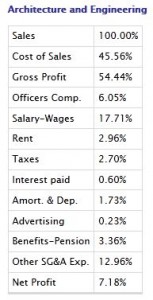Archive for category BIM
Hey Microsoft I’ve Got Your Game Changer; Right Here
Posted by Jim Foster in BIM, New Technologies, Revit on October 24, 2012
 So when we demo our software, inevitably for a lot of architects we are asked, usually at least once, so will this work on the ipad? Fact is, not yet, not until Revit works on the ipad, which the only way I see that happening is that Citrix does an amazing job serving it through a 4G pipeline, so most likely Revit / BIM Models can be viewed in the field, but not yet interacting with one in a meaningful way. Yes you might argue there are check lists, etc. but I’m speaking about dealing with the actual authoring tool. So while architects ask if PKNail Pro works on the ipad. Salespeople will say, “Hey have you seen the Surface? That could be a game changer for you.” That is full blown windows working on a tablet that will run Revit in the field. The review by David Pogue in the Times, states the Surface “On the hardware front, Microsoft has succeeded brilliantly… amazing, amazing hardware. Now the heartbreak: software.” He argues that operating system is not here yet, but this is Windows RT. I’m talking about taking Full Blown Windows into the field for some serious heavy weight mobile application throw down. Building a Revit Model, a Building Information Model of an existing building, in the field, in real time with just your Surface Tablet, a laser range finder, and some software, some industry specific software that will make you 10x faster. Yes, I’m saying PKNail Pro will do that. It’s effective, it’s fast, and now let’s put a wrapper around it named Surface.
So when we demo our software, inevitably for a lot of architects we are asked, usually at least once, so will this work on the ipad? Fact is, not yet, not until Revit works on the ipad, which the only way I see that happening is that Citrix does an amazing job serving it through a 4G pipeline, so most likely Revit / BIM Models can be viewed in the field, but not yet interacting with one in a meaningful way. Yes you might argue there are check lists, etc. but I’m speaking about dealing with the actual authoring tool. So while architects ask if PKNail Pro works on the ipad. Salespeople will say, “Hey have you seen the Surface? That could be a game changer for you.” That is full blown windows working on a tablet that will run Revit in the field. The review by David Pogue in the Times, states the Surface “On the hardware front, Microsoft has succeeded brilliantly… amazing, amazing hardware. Now the heartbreak: software.” He argues that operating system is not here yet, but this is Windows RT. I’m talking about taking Full Blown Windows into the field for some serious heavy weight mobile application throw down. Building a Revit Model, a Building Information Model of an existing building, in the field, in real time with just your Surface Tablet, a laser range finder, and some software, some industry specific software that will make you 10x faster. Yes, I’m saying PKNail Pro will do that. It’s effective, it’s fast, and now let’s put a wrapper around it named Surface.
So Microsoft, send me a demo, if it’s what I’m expecting I’ll be singing your praises. It’s time to get to work.
*I’m serious Microsoft, so hopefully an identity manager has picked this thread up, or someone wants to make introduction. We are fired up for the Surface and not because we want swag but because it looks like its the size of a beach ball, teed up, and we’re swinging hard.
**Why a picture of LT? Well, it’s LT. Further defined: Left Offensive Tackles are now prized possessions in the NFL and some of the highest paid. That happened when LT lined up. LT changed the game.
When BIM Falls Down : Call Me Maybe : It’s Communication
Posted by Jim Foster in BIM on October 3, 2012
 There was a headline grab, “Late-Arriving BIM Model,Overruns Cost US Almost $10 Million” a few days back. I’d include the link through ENR but it’s already dead and only for paying customers. But who or what actually fell down? Did the lateness of the model cause the cost over runs? Was it a lousy model? However, that prompts the question, or search “BIM Lawsuit“, and you know what,you do not get back many results. The article BIM Offers Cautionary Tale from the Architectural Record comes up first and is from May 19, 2011. A few bits from the article:
There was a headline grab, “Late-Arriving BIM Model,Overruns Cost US Almost $10 Million” a few days back. I’d include the link through ENR but it’s already dead and only for paying customers. But who or what actually fell down? Did the lateness of the model cause the cost over runs? Was it a lousy model? However, that prompts the question, or search “BIM Lawsuit“, and you know what,you do not get back many results. The article BIM Offers Cautionary Tale from the Architectural Record comes up first and is from May 19, 2011. A few bits from the article:
“The contractor sued the owner, the owner sued the architect, and XL brought in the MEP engineer. “It was a very costly claim to negotiate,” says Lewis. XL(the insurance company) did not litigate the claim because it would be difficult for any jury to comprehend.
But more importantly:
The problem was poor communication. “The design team never discussed the installation sequence with the contractor, and the contractor wasn’t sophisticated enough” to understand the importance of assembling the components in a certain order, says Lewis.
So quick over view, it was communication, not the model, but overall insight, we’ve got one law suit coming up and it was settled in May 2011, how long has BIM been around? So that seems like a pretty good track record, or awesome legal representation and contractual agreements, or what? Fast forward to this latest article and it still seems to be a communication and coordination problem, the BIM was provided late, the clash detections were late, and it seemed no one wanted to take responsibility for the development of the a ‘clash free’ model. Now I am doing this by memory since I got one read in, linked it and now its gone so please forward a link or copy if you have one. However, it comes down to communication, one still sees the power of BIM and the fact that it unearthed 50K+ clashes, still digitally so not sure if the cost over runs were due to change orders and time delays or redoing the whole BIM model. What does this scream though, “it’s the process people.”
In most cases each contractor is going to work within their particular area of expertise and provide said BIM Model to the level of detail that they are contractually obligated to, in fact, I’ve been asked to do a Revit Model for a just built building because it was required at the end of the project, they wanted it for short money, tail light guarantee, just so they could check off a box. Not necessarily what the process was supposed to be about, but they were filling their obligation.
The ratio of BIM Success v. BIM Cautionary Tale is 143,238.2 to 1, but I can see where the cautionary tale makes people question the technology? Wrong. Question the process
3D 4D 5D Go! : The 5th D of BIM Cost Coming Into Focus
Posted by Jim Foster in Adoption, BIM, New Technologies on September 18, 2012
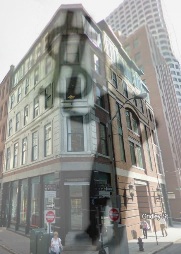 To reduce costs for any project or product, look at the inputs; can they be improved? Break out the Cost of Goods Sold, or Cost of Sales. In construction the Cost of Sales (which will include material and labor) is at a whopping 84%. This leaves leaving only a 16% gross margin for everything else. To put this in perspective Walmart operates at around a 25% Gross Margin. So is it any wonder the need to lock down costs and reduce waste is more extreme in this industry than most? Compare it to its aligned industry the AE (Architecture Engineering) industry whose gross margin is 3 times as high and there is good reason that BIM was initially more widely adopted and implemented by the construction trades. Any advantage in reducing costs, improving margins or making a firm more competitive in the marketplace will find a receptive audience in construction.
To reduce costs for any project or product, look at the inputs; can they be improved? Break out the Cost of Goods Sold, or Cost of Sales. In construction the Cost of Sales (which will include material and labor) is at a whopping 84%. This leaves leaving only a 16% gross margin for everything else. To put this in perspective Walmart operates at around a 25% Gross Margin. So is it any wonder the need to lock down costs and reduce waste is more extreme in this industry than most? Compare it to its aligned industry the AE (Architecture Engineering) industry whose gross margin is 3 times as high and there is good reason that BIM was initially more widely adopted and implemented by the construction trades. Any advantage in reducing costs, improving margins or making a firm more competitive in the marketplace will find a receptive audience in construction.
Cost saving were first realized with BIMs starting with the 3D coordination of the digital model, clash detection and then scheduling(the 4th D) of construction and the reduction of the cost of labor. Downtime for crews due to change orders or having material unavailable was reduced. Now we are starting to see more firms focus on the cost of materials and how they can be managed and best integrated into a project.
RIB Software , based in Stuttgart Germany is a leading provider of technical ERP (Enterprise Resource Planning) software solutions for the construction industry recently announced the acquistiono of MC2 one of the leaders in cost estimation software for the construction industry or the 5th D of BIM. In the official press release RIB stated ‘Major step taken in the US market for 5D-BIM technology’. In July Trimble acquired WinEstimator another leader in cost estimation in the United States.
Bespoke Homes : Facit Design Using BIM to Design Homes for Assembly
Posted by Jim Foster in BIM, New Technologies on August 17, 2012
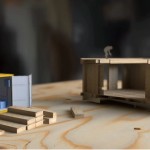 Design and Build have not always been the best of friends, honestly. While you don’t have one without the other there is still a separation, like oil and water, sure you can shake it and it stays mixed for a bit and can make a tasty dressing but without adding something they always separate again. An architect might create a BIM to use for construction but then the CM (construction manager) might take the BIM and say, ‘oh yes, I see what you want to do,’ and then design it for constructablility. Before entering the AEC part of the world I was in product design and manufacturing. Parts were designed to have less waste, to be less complex, to use simpler molds, to reduce cycle time, to have less operations, all to create an easy assemble, cost effective product. There was a version of 3D printing called SLA (Sterolithography) that used lasers that hardened resin a millimeter at a time to create 3D models and CNC machines to hog ABS plastic out, among other materials, to create prototypes of a part and product before you went to mold, because creating the molds was expensive and you wanted to know the parts worked together, and the right tolerances before you cut steel. These processes and machines were expensive but when it was right, all that expense would allow to create inexpensive repeatable parts that could be easily assembled and voila, your buying a blender for $29.99. But the cost for these technologies has plummeted from ZCorp’s 3D printing, to being able to build or buy your own desktop CNC machine or 3D printer. However, this process is still in its infancy in the design/build world of homes, building and architecture.
Design and Build have not always been the best of friends, honestly. While you don’t have one without the other there is still a separation, like oil and water, sure you can shake it and it stays mixed for a bit and can make a tasty dressing but without adding something they always separate again. An architect might create a BIM to use for construction but then the CM (construction manager) might take the BIM and say, ‘oh yes, I see what you want to do,’ and then design it for constructablility. Before entering the AEC part of the world I was in product design and manufacturing. Parts were designed to have less waste, to be less complex, to use simpler molds, to reduce cycle time, to have less operations, all to create an easy assemble, cost effective product. There was a version of 3D printing called SLA (Sterolithography) that used lasers that hardened resin a millimeter at a time to create 3D models and CNC machines to hog ABS plastic out, among other materials, to create prototypes of a part and product before you went to mold, because creating the molds was expensive and you wanted to know the parts worked together, and the right tolerances before you cut steel. These processes and machines were expensive but when it was right, all that expense would allow to create inexpensive repeatable parts that could be easily assembled and voila, your buying a blender for $29.99. But the cost for these technologies has plummeted from ZCorp’s 3D printing, to being able to build or buy your own desktop CNC machine or 3D printer. However, this process is still in its infancy in the design/build world of homes, building and architecture.
Sure you see full scale BIM’s with clash detection and the different disciplines coming together to seeing into the one model, and sequencing and scheduling and for the most part it is on larger projects, under the the guise of IPD (Integrated Project Delivery), but still rarely do you see component parts built off site and brought on to be inserted into the building, although prefab is gaining more steam. Still you have a lot of people creating buildings on site, by hand. And usually they do a fantastic job of it, but imagine if you had a machine creating custom cuts, etc. for assembly, direct from the design, allowing for tighter tolerances, less waste, reduced manpower, better scheduling, well that should be a fine addition to the toolbox of architects and builders.
When I read An Entire House That You Can Snap Together Like a Toy, I was very interested, but more excited to learn about the process. Which brought me to Facit Homes, out of London and then watching their videos. They design for assembly, that is, the thought put into the design is from the product design world, how it goes together, how will it work, how is it most effective, and, AND, this is big, there is a portable CNC machine/truck making custom cutting wood for assembly into the home they designed. That’s awesome. And while they don’t seem to be advertising the fact, they are using Autodesk Revit for the process, as you can see the ribbon in the videos. Regardless of what technology they are using, that’s awesome. Less waste, tighter fits, built for assembly. They get it. Integrated Design Build. Cats and Dogs Living Together. Now That’s a Tasty Burger.
D-Process from Facit Homes on Vimeo.
GTeam : Enabling Browser BIM : The BIM Blender
Posted by Jim Foster in BIM, New Technologies on July 23, 2012
 Recent Press Release from Gehry Technologies introduces GTeam. To explain GTeam, let’s briefly discuss what BIM is suppose to be and I will define it as a collaborative process to reduce waste; wastes of time, materials, resources, etc. How this is done is argued as frequently as the legitimacy of the designated hitter. However, I don’t think you can argue the more people on a platform the better, so when a change is needed or made, the people who need to see it, see it, can comment, iterate, make it better, make it happen. Hence the argument for open standards. Truth is, BIM authoring tools are time consuming to create and maintain so who has a vested interest in building and nurturing such a tool? Besides well meaning folk, not for profit corporations. So what we need is the BIM Blender that will take in all disparate types of information and serve them to people, preferably on an iPad. Why iPad? Because, and I mean this as a compliment, a three old can operate an iPad. If something better comes along, so maybe a 16 month can operate it, so be it but right now, let’s admit everyone asks if your app, program, etc, runs on an ipad. So this blender need to take in every format, regardless of the authoring tool, regardless of the format, and be able to organize it and allow the user to interact with it in a meaningful way. Supposedly Horizontal Glue, now part of Autodesk 360 was a tool like this, and now we have GTeam from Gehry Technologies, which makes the argument, ” is the easiest platform for teams to collaborate and share documents, files and 3D building information online. Architects, designers, engineers, contractors, consultants, and owners use GTeam to reach consensus faster, reduce change orders, save time, get more work and reduce project costs.” Like Spike Lee said, “the mo’ colors, the mo’ better’ and the more people working on getting the pipe fitter on the same page, as the engineer, as the architect, the mo’ better, and the folks at Gehry have some experience getting people on the same page.
Recent Press Release from Gehry Technologies introduces GTeam. To explain GTeam, let’s briefly discuss what BIM is suppose to be and I will define it as a collaborative process to reduce waste; wastes of time, materials, resources, etc. How this is done is argued as frequently as the legitimacy of the designated hitter. However, I don’t think you can argue the more people on a platform the better, so when a change is needed or made, the people who need to see it, see it, can comment, iterate, make it better, make it happen. Hence the argument for open standards. Truth is, BIM authoring tools are time consuming to create and maintain so who has a vested interest in building and nurturing such a tool? Besides well meaning folk, not for profit corporations. So what we need is the BIM Blender that will take in all disparate types of information and serve them to people, preferably on an iPad. Why iPad? Because, and I mean this as a compliment, a three old can operate an iPad. If something better comes along, so maybe a 16 month can operate it, so be it but right now, let’s admit everyone asks if your app, program, etc, runs on an ipad. So this blender need to take in every format, regardless of the authoring tool, regardless of the format, and be able to organize it and allow the user to interact with it in a meaningful way. Supposedly Horizontal Glue, now part of Autodesk 360 was a tool like this, and now we have GTeam from Gehry Technologies, which makes the argument, ” is the easiest platform for teams to collaborate and share documents, files and 3D building information online. Architects, designers, engineers, contractors, consultants, and owners use GTeam to reach consensus faster, reduce change orders, save time, get more work and reduce project costs.” Like Spike Lee said, “the mo’ colors, the mo’ better’ and the more people working on getting the pipe fitter on the same page, as the engineer, as the architect, the mo’ better, and the folks at Gehry have some experience getting people on the same page.
What’s That in the Sky? Sweet Jesus it’s an Autodesk Octo-Copter.
Posted by Jim Foster in BIM, Built Environment, New Technologies on June 21, 2012
Autodesk deployed it’s Octo-Copter in Africa for high resolution reality capture. This was done in support of Louis Leakey in Kenya in search of our ancestral trails
Additonally, they deployed it on their head quarters in San Rafael.
From the Gizmag Website:
The Mikrokopter Octocopter is an 8-rotor flying platform which has a 2 kg (4.4 lbs) capacity to carry cameras. It can be flown using an internal camera to give the operator a copter-based vantage point on video glasses, or can be programmed to follow a GPS-controlled flight path. An Octocopter can fly autonomously at altitudes up to 1000 meters (3280 feet), or can be manually flown as high as 3500 meters (11,480 feet). In the Autodesk tests video was captured using a GOPro Hero 2 camera, and the still pictures from which the 3D model was later built were taken by a remotely triggered Canon SLR camera.
Autodesk 123D is a suite of programs which allow a user to create, manipulate, and construct 3D objects using a 3D printer. Catch is part of the 123D suite, and offers a standalone software package that helps you create 3D models from a series of 2D digital images of an object or a scene. The spatial resolution available using 123D Catch is about 1 part in 600, or 0.167% of the total size of the object pictured, so you would be able to accurately place individual windows on a 3D model of a Boeing 747.
For Those That Like to Tweet… A Free iPad
Posted by Jim Foster in BIM, Built Environment, New Technologies, Point to Point Laser Technology on June 13, 2012
 Tweet about PKNail Pro’s Proven Field to BIM Technology, Get Entered Automatically
Tweet about PKNail Pro’s Proven Field to BIM Technology, Get Entered Automatically
PointKnown is giving away a free Apple iPad to one lucky Twitterer…er, tweeter, i.e. one who uses the service twitter to disseminate clever, witty, informative text burst in 140 characters or less. PointKnown does not claim to be clever, witty or informative, but will claim producing kick ahh…whup ahh…Excellent productivity software tools for documenting existing buildings.
How to Enter
To participate, simply tweet using the hash tags below:
#pknail #revit #bim and mention ‘PKNail Pro’
Examples
“PKNail Pro turbo charges Revit and modeling existing buildings #pknail #revit #bim”
or “Capture Existing Buildings Directly In Revit with PKNail Pro, 5x-10x faster #pknail #revit #bim”
less pertinent but still acceptable “We came, we saw, we conquered with PKNail Pro, #pknail, #bim , #revit”
less pertinent verging to the non-sequitur but still acceptable…
“beautiful software for happy people PKNail Pro, #pknail, #bim, #revit”
Remember: follow @pointknown on Twitter for the winner announcement:
We are on the road with Microcad and have other excellent resellers including, Seiler Instrument (ask for Harvey) and CADDFX
Legal Mumbo Jumbo
Rules & Conditions
1. This giveaway is offered by PointKnown LLC and is open to anyone with a Twitter account who is at least 16 years of age. Employees of PointKnown, LLC. and/or its affiliated companies and family members of such employees may enter the contest but are not eligible to win.
2. The giveaway will begin at the time of this post and end 62 days after initial post, a winner will be randomly chosen, much like the number 62, and announced via twitter through @pointknown
3. One giveaway will be available: a 16GB Wi-Fi Apple iPad or $499 Apple Store Credit, winner’s choice.
4. You must prove ownership of the winning entry and provide your email address to collect the prize.
5. To enter the giveaway you must send out a tweet from your own Twitter account that includes the #hash tags above in your message.
6. Entries using automated tweets will be disqualified, however there is no limit on the number of tweets you may enter.
7. PointKnown LLC will choose a winner randomly from all the entries within the specified period. The winner will be announced from our twitter account (@pointknown) once the contest ends.
8. Entrants agree to allow @pointknown to use their twitter handles and entry tweets for marketing purposes.
9. Neither PointKnown LLC. nor its affiliated companies shall have any liability for (i) any technical failures of any kind, including but not limited to malfunctions, interruptions or disconnections in phone lines or network hardware or software; (ii) technical or human error which may occur in the administration of the giveaway; (iii) any malfunction of or damage to the prize; (iv) any corruption, typos or hacking of prize winners email accounts; or (v) any restrictions or delays imposed by any customs authorities or any import or other taxes of any kind imposed by any taxation authority in respect of the prizes.
Autodesk Continues to Round Out Portfolio : Acquires Vela Systems
Posted by Jim Foster in BIM, New Technologies on June 8, 2012
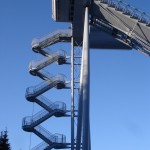 Announced today, Autodesk Acquires Vela Systems. If you are developing products within the Building Life Cycle somewhere between and including design to demolition, you are in play. Trimble has been going on an acquisition rampage with its acquisition of Tekla and Sketch Up and Autodesk never one to be a wallflower has just acquired Vela. This is almost 2 years to the date that Vela was unveiled publicly. No idea of their market size but their own press releases state that they are more than ‘twice as big’ as any competitive Field BIM Systems. Regardless, market penetration means little at this point now that the Autodesk marketing/sales system is behind it. How big was Revit in 2006 when they were purchased. A primer of Vela’s Key Features below. Congrats Vela folks, job well done.
Announced today, Autodesk Acquires Vela Systems. If you are developing products within the Building Life Cycle somewhere between and including design to demolition, you are in play. Trimble has been going on an acquisition rampage with its acquisition of Tekla and Sketch Up and Autodesk never one to be a wallflower has just acquired Vela. This is almost 2 years to the date that Vela was unveiled publicly. No idea of their market size but their own press releases state that they are more than ‘twice as big’ as any competitive Field BIM Systems. Regardless, market penetration means little at this point now that the Autodesk marketing/sales system is behind it. How big was Revit in 2006 when they were purchased. A primer of Vela’s Key Features below. Congrats Vela folks, job well done.
Vela Field Management Suite Key Features
The Vela Field Management Suite of Web, Mobile and Reports enables everyone throughout the enterprise to access documents, field activities and reports in the office and in the field. Since its release a year ago, and to further broaden the usability throughout the enterprise, Vela Systems has expanded upon the following features:
- Field BIM® for commissioning and handover that ties BIM to the field for data and document exchange
- Company-level checklist and issue template capabilities to implement and enforce quality and safety programs
- Increased accessibility via the Internet on multiple devices like iPads and Smart Phones
- Better web-based reporting that turns field data into powerful information for managing quality, safety and risk at the project and company level
NYC initiative for BIM Digital Safety Plans : Turner Project Approved
Posted by Jim Foster in BIM on May 31, 2012
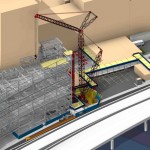 File under cool. The City of New York has unveiled an initiative for the electronic submission of BIM safety plans; you can learn more here; and a Turner Press Release yesterday stated they used both 2D and 3D BIM submissions to get approval for their construction project at the Energy Building at NYU Langone Medical Center.
File under cool. The City of New York has unveiled an initiative for the electronic submission of BIM safety plans; you can learn more here; and a Turner Press Release yesterday stated they used both 2D and 3D BIM submissions to get approval for their construction project at the Energy Building at NYU Langone Medical Center.
“The digital submission of 3D, BIM-based site safety plans reduced the approval times from weeks to days,” said Di Fillipo, Turner Senior Vice President.
Field BIM Kit : PKNail Pro : That’s my bag baby.
Posted by Jim Foster in BIM, Built Environment, New Technologies on May 21, 2012
The more demos I go on, the more I get asked about our field kit, so I wanted to post what’s in my bag and what we use on a day to day basis when surveying/modeling in the field with PKNail Pro. Those of you not interested in the day-in day-out particulars of surveying buildings may want to hit your back button now… Anyway an individual equally equipped will be ready for knocking out BIM Building Surveys, and this kit, all in, costs a fraction of most other technology solutions, plus the added benefit of surveying/modeling directly in the platform you or your clients are most likely working in. However, always choose the tool/service that fits your needs. In fact, we’ll be posting shortly where we combined workflows of PKNail Pro and pointclouds. But here you go, what’s in my bag or my complete kit.
- Tablet PC running appropriate software (PKNail Pro and Autodesk Revit)
- Disto D8
- Measuring Tape
- Sticky Notes
- Painters Tape
- Reflective Target
- Tripod
- Leica Tripod Attachment
- Laptop Tripod / Cart
- LED Flashlight / Wearable
- Diameter Tape
- External Laptop Battery
- Rechargeable Batteries
- Laptop Bag
- Food
- Building Chalk / Marking Crayon
So it might seem like a lot but all fits in the bag except for the tripods. The laptop tripod is excellent when mobility/portability with your gear is at a premium but I will use a laptop cart with wheels if the space allows; it is easier with wheels and has more surface area to put stuff.
The real minimum you need to have with you is a laptop/tablet PC running the appropriate software, a Disto D8 or 330i, a measuring tape, and something to use for a target when needed, like an outside corner. Stickynotes (larger size) are excellent for shorter distances, a reflective Leica Target attached with Painter’s Tape is better for longer ones. Rechargeable batteries for both the laptop and Disto. I prefer an external battery pack for the laptop as it can be used on any laptop and it is self contained unlike an extra battery for a specific laptop.
I like Eneloop rechargeables for devices, my preference, they come preloaded with a charge, and seem to carry it longer when not being used. You need a measuring tape on occasion for distances to short or sometimes nice to hook something with a tape when finding a distance manually. I like thick banded measuring tapes because they will extend longer without ‘breaking’ but find they are just as prone to wear down as any other so sometimes not worth the expense. LED flashlight because they are bright and do not use as much juice as others, and are always nice to have. I also have an LED light that you can wear on your head, which is my preferred. Diameter tape is a luxury but one side is graduated the other will measure the diameter of any round column which is helpful.
The tripod attachment from Leica allows it to pivot properly on the its axis so the measurements stay as accurate as possible. This is great to have for exterior work when you might not have access to the interior of the building. Building chalk or a marking crayon can be helpful but usually would want to mark with painters tape or sticky pad because they are easily removed, however, the former comes in handy sometimes, especially in basements.
And bring food and drink, nothing clouds your mind like being hungry, so eat.

